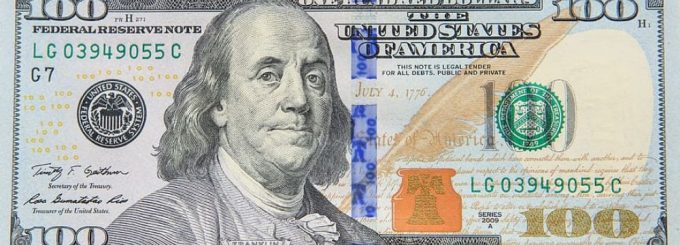Security Features on The Newest 100 Bill

The U.S. government has made some recent changes to the $100 bill, which is designed to enhance its security. This piece of currency is one of the most recognized and traded worldwide, and according to experts the Federal Reserve has been working on the security upgrade since 2003. The new bills were originally scheduled for release in 2011, but due to problems with creases their circulation was delayed.
How Does The New $100 Bill Differ From Older Ones?
The new bill differs from classical collector notes due to state of the art features that make it simpler for handlers to authenticate, while being much more difficult for counterfeiters to mimic. This results in the new $100 bill being a bit more expensive than previous versions, but according to experts will actually save the government money over the long term. Research indicates that the U.S. $100 bill is more counterfeited than any other piece of American currency, especially outside the U.S. Countries such as North Korea are infamous for creating notes that appear highly accurate, which are referred to as supernotes, which are notoriously difficult to identify as fakes. The new $100 bill was designed specifically to counter them.
Specific Security Features
The latest $100 bill has a security ribbon that is three dimensional and blue in color, which is woven (rather than printed) inside the fabric. An additional security strip can also be seen to the left side of Benjamin Franklin’s face, but can only be seen when it is held up near a light. Another security feature incorporates Benjamin Franklin’s image itself, where it appears as a photo which is faint on the black space on the bill’s right side, which can be viewed from the back and front.
The new bill also utilizes alternating images for bells and the 100 number will change depending on which angle the bill is viewed from. The liberty bell within the ink well will change from a copper into green when the note is tilted. The large “100” in front will also change color whenever the note is tilted, and a bigger “100” has been positioned vertically near the back to help people who have visual impairments verify that the currency is authentic.
What is most impressive about the new note is the raised intaglio which is printed on the surface so that it has a unique texture. The Fed also utilizes micro printing, with letters that say “The United States of America” near Benjamin Franklin’s collar, along with the words “USA 100” near the watermark and the text “ONE HUNDRED USA” by the golden quill.
What Happens To The Older $100 Bills?
Aside from the fact that the oldest $100 bills have become coveted collector’s items, any old bills that you have in your safe don’t have to be turned in. The large number of notes which are already being circulated (or hidden within mattresses and other places) will stay legal, but any that pass through the Fed will be destroyed.


